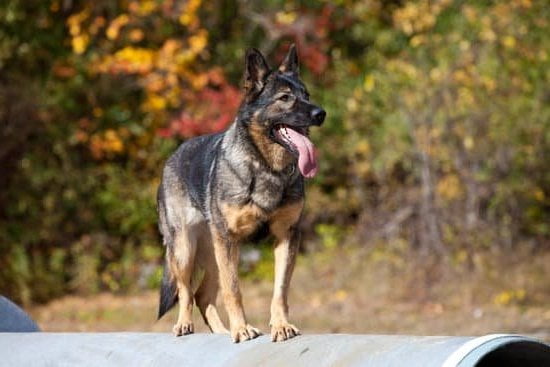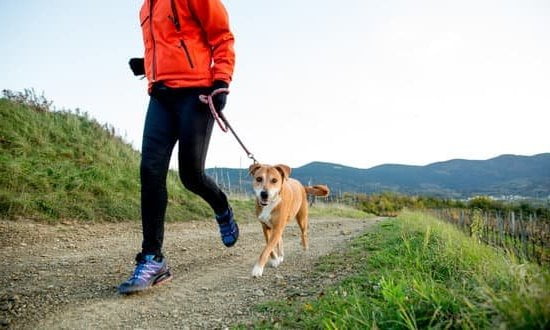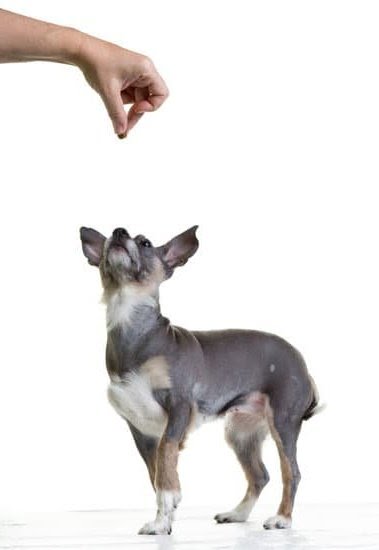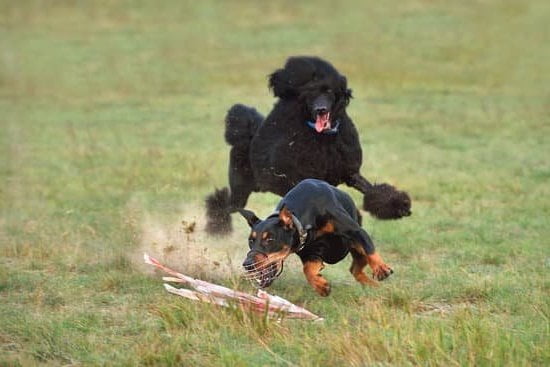Is your dog constantly chewing on things around the house? If so, you may be wondering how to train a dog to stop chewing on things. Understanding the reasons behind a dog’s chewing behavior and what signals it may be sending is crucial in addressing this issue effectively.
Dogs chew for a variety of reasons, including teething, boredom, anxiety, and even curiosity. By understanding the underlying cause of your dog’s chewing behavior, you can better address it through proper training and management techniques.
In this article, we will explore the various factors that contribute to a dog’s chewing habits and provide valuable tips and strategies for training your dog to stop chewing on things. From choosing the right chews to creating a dog-friendly environment in your home, we will cover everything you need to know to effectively address your dog’s chewing behavior.
So, let’s delve into the world of understanding why dogs chew and how you can train them to stop.
Choosing the Right Chews
When it comes to training a dog to stop chewing on things, one effective approach is to redirect their chewing behavior towards safe and appropriate chew toys and treats. This not only satisfies the dog’s natural instinct to chew, but also helps protect your belongings from being destroyed. Here are some tips for identifying the right chews for your dog:
Understanding Your Dog’s Chewing Behavior
Before choosing the right chews for your dog, it’s important to understand their individual chewing behavior. Some dogs may be aggressive chewers and require more durable toys, while others may prefer softer textures. Observing how your dog chews can help you select the most suitable chew toys and treats.
Safe Chew Toy Options
There are various types of chew toys available in the market, including rubber toys, nylon bones, and puzzle toys. When selecting a chew toy for your dog, ensure that it is made of safe and non-toxic materials. Avoid giving them items that can easily splinter or break into small pieces, as these can pose a choking hazard.
Appropriate Chew Treats
In addition to chew toys, providing your dog with appropriate chew treats can help redirect their chewing behavior. Bully sticks, dental chews, and rawhide alternatives are popular options that can keep your dog engaged while promoting good dental health. Always supervise their treat consumption to prevent any potential choking incidents.
By understanding your dog’s individual needs and preferences and offering safe and suitable chew toys and treats, you can effectively train them to stop chewing on household items. Regularly rotate their toys to keep them engaged and discourage destructive chewing behaviors. Remember that consistency and patience are key when implementing this training method.
Puppy Proofing Your Home
One effective strategy for puppy proofing your home is to use baby gates or barriers to section off certain areas where your dog will not be allowed unsupervised. This can help prevent them from getting into trouble by accessing items that they shouldn’t be chewing on. Additionally, storing valuable or dangerous items out of reach and using bitter-tasting sprays on furniture legs or other tempting objects can deter dogs from chewing on them.
Another important aspect of creating a dog-friendly environment is ensuring that your dog has access to appropriate chew toys and treats. Providing plenty of toys that are specifically designed for chewing can help redirect their behavior onto acceptable items. It’s also crucial to rotate their toys regularly to keep them engaged and prevent boredom, which can lead to destructive chewing behaviors.
| Puppy Proofing Tips | Benefits |
|---|---|
| Use baby gates or barriers | Prevents unsupervised access |
| Store valuable items out of reach | Prevents destruction and injury |
| Provide appropriate chew toys | Redirects chewing behavior |
Positive Reinforcement
Using Rewards to Encourage Good Chewing Behavior
One effective way to train a dog to stop chewing on things is through the use of positive reinforcement. When your dog chews on an appropriate toy or treat, be sure to offer them praise and a reward. This could be a small treat, verbal praise, or even a favorite toy. By consistently rewarding your dog for good chewing behavior, you are reinforcing the idea that certain items are acceptable to chew on.
Avoiding Punishment
It’s important to avoid using punishment as a method of discouraging destructive chewing. Instead of yelling at or scolding your dog when they chew on something they shouldn’t, focus on redirecting their attention to an appropriate toy or treat. Punishing a dog for chewing may lead to fear and anxiety, which can actually exacerbate the problem. Positive reinforcement is much more effective in shaping your dog’s behavior.
Consistency Is Key
In order for positive reinforcement to be successful in training a dog to stop chewing on things, consistency is crucial. Make sure that all members of the household are aware of the training methods being used and are consistent in their approach. If everyone responds differently to the dog’s chewing behavior, it can confuse the animal and hinder progress. Consistent rewards and praise for good chewing behavior will help reinforce the desired habits in your dog.
Consistency Is Key
Consistency is crucial when it comes to training your dog to stop chewing on things. Dogs thrive on routine and structure, so it’s important to establish clear rules and boundaries from the start. This means being consistent in redirecting their chewing behavior, providing appropriate chew toys, and offering praise and rewards for good behavior. Inconsistency can lead to confusion for your dog, making it harder for them to understand what is acceptable or not.
One effective way to train a dog to stop chewing on things is by redirecting their attention to appropriate chew toys. When you catch your dog in the act of chewing on something they shouldn’t be, calmly take away the forbidden item and replace it with a suitable chew toy. Over time, they will learn that their toys are the only acceptable items for them to gnaw on.
Additionally, setting clear boundaries around the house is essential in reinforcing consistent training. Use baby gates or closed doors to restrict access to areas where your dog may be tempted to chew on household items. By controlling their environment, you can prevent unwanted chewing behavior and create a space that is conducive to positive reinforcement training methods.
| Training Tip | Details |
|---|---|
| Redirect Chewing Behavior | Replace forbidden items with appropriate chew toys |
| Set Clear Boundaries | Use baby gates or closed doors to restrict access |
Exercise and Enrichment
To prevent boredom and excessive chewing in dogs, it’s crucial to provide them with adequate physical and mental stimulation. This can help keep their minds and bodies engaged, reducing the likelihood of destructive behaviors such as chewing on household items. Here are some tips for providing exercise and enrichment for your canine companion:
- Regular Exercise: Make sure your dog gets plenty of physical activity through daily walks, runs, or playtime. This helps burn off excess energy and keeps them from getting bored, which can lead to destructive chewing.
- Mental Stimulation: Engage your dog’s mind with interactive toys, food puzzles, and training exercises. This type of mental enrichment can help prevent boredom and reduce the desire to chew on things out of frustration or restlessness.
- Rotate Toys: Introduce a variety of toys and rotate them regularly to keep your dog interested and engaged. This can prevent them from becoming bored with their belongings and seeking out other items to chew on.
In addition to regular exercise and mental stimulation, providing a safe space for your dog to relax is important. Create a comfortable area with their bed or crate where they can retreat when they need some downtime. This helps reduce stress and anxiety, which can also contribute to excessive chewing behavior.
By incorporating these strategies into your dog’s routine, you can help prevent boredom and excessive chewing, ultimately creating a happier and healthier environment for both you and your furry friend. Remember that every dog is unique, so it may take some trial and error to find the right combination of exercise and enrichment activities that work best for your pet.
Addressing Separation Anxiety
When a dog exhibits destructive chewing behavior, it may be a sign of separation anxiety. Dogs are social animals and they can experience distress when left alone for extended periods of time. This anxiety can lead to destructive behaviors such as chewing on furniture, shoes, and other household items. Recognizing the signs of separation anxiety in your dog is crucial in addressing their destructive chewing habits.
To address separation anxiety in dogs, it is important to implement strategies that help them feel more secure and relaxed when left alone. Here are some effective methods for addressing separation anxiety and preventing destructive chewing:
- Gradual desensitization: Gradually getting your dog used to being alone by leaving them for short periods of time and gradually increasing the duration can help reduce separation anxiety.
- Providing interactive toys: Offering toys that provide mental stimulation and engage your dog’s attention can help alleviate boredom and anxiety when left alone.
- Creating a calm environment: Establishing a calm and quiet environment before leaving your dog alone can help reduce their stress levels. Playing soothing music or leaving an article of clothing with your scent can also provide comfort for your dog.
When training a dog to stop chewing on things due to separation anxiety, it is important to address the root cause of the behavior. By implementing these strategies, you can help your dog feel more at ease when left alone and prevent destructive chewing habits. Seeking guidance from a professional dog trainer or behavior specialist may also be beneficial in addressing persistent separation anxiety and destructive chewing behavior.
Seeking Professional Help
In conclusion, training a dog to stop chewing on things requires a multifaceted approach that addresses the underlying reasons for the behavior and provides alternative outlets for your dog’s natural chewing instincts. Understanding why dogs chew, choosing the right chews, puppy-proofing your home, and employing positive reinforcement are all essential aspects of effective training. Consistency is key in enforcing boundaries and rewarding good behavior, while providing ample exercise and mental stimulation can help prevent boredom-related chewing.
In some cases, persistent chewing issues may require professional intervention. It’s important to recognize when seeking help from a professional dog trainer or behavior specialist is necessary. If your dog’s chewing behavior is causing significant damage or if it is linked to separation anxiety, consulting with an expert can provide tailored strategies and support. A professional can assess the specific triggers for your dog’s chewing and develop a targeted training plan to address the issue effectively.
Remember that each dog is unique, and what works for one may not work for another. Be patient and persistent in your training efforts, and don’t hesitate to reach out for assistance if you’re struggling to train your dog to stop chewing on things. With the right guidance and resources, you can help your furry friend develop good chewing habits and create a harmonious living environment for both you and your pet.
Frequently Asked Questions
How Do I Get My Dog to Stop Chewing and Eating Everything?
To get your dog to stop chewing and eating everything, it’s important to provide plenty of appropriate chew toys and regularly exercise your dog to release excess energy. Additionally, training and positive reinforcement can be used to redirect their chewing behavior.
How Do I Get My Dog to Stop Chewing Everything When Left Alone?
If your dog tends to chew everything when left alone, it may be a sign of separation anxiety. Gradual desensitization to being alone, providing engaging toys, and creating a comfortable space can help reduce destructive chewing behavior when you’re not around.
At What Age Do Dogs Stop Destructive Chewing?
Dogs typically stop destructive chewing by the age of 1-2 years old as they begin to mature and outgrow their puppy habits. However, some dogs may continue this behavior if they are bored, anxious, or not provided with proper outlets for their natural chewing instincts.

Welcome to the blog! I am a professional dog trainer and have been working with dogs for many years. In this blog, I will be discussing various topics related to dog training, including tips, tricks, and advice. I hope you find this information helpful and informative. Thanks for reading!





